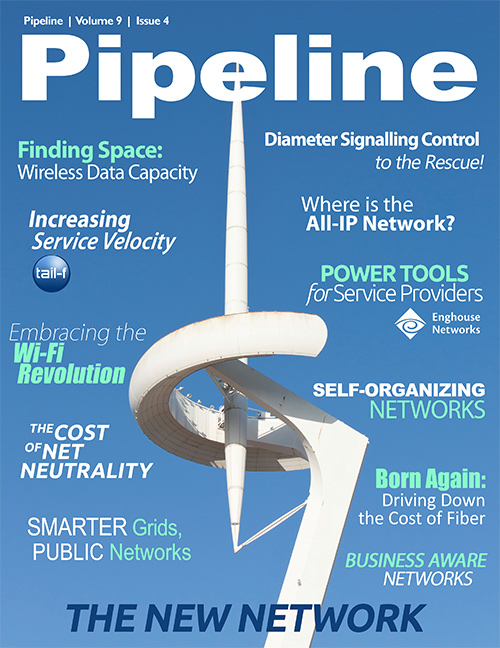Finding Space: Solutions for the Wireless Data Capacity Crunch
White space
Then again, anyone familiar with the LightSquared controversy knows that, especially in a relatively saturated market like the United States, spectrum is hard to come by for all CSPs, not just those regarded as potential monopoly threats. Whether this scarcity is the result of heavy traffic or excessive regulation, the fact remains that creating room for additional traffic is not always as simple as it seems. Sometimes, however, the freeing up of previously set-aside bandwidth creates opportunities.
Such is the case with so-called spectrum white space, the unused bandwidth between television channels created by the FCC to avoid programming interference. A rider nestled into a tax cut law signed by President Obama in February (ah, the arcane joys of the lawmaking process) opened up those white spaces for unlicensed development. These strong signals have potential for carrying wide-area versions of Wi-Fi, thanks to the capacity for long distance transmission and strong building penetration.
White space isn't a panacea for crowded networks, however. Crowded urban and suburban areas that need the bandwidth the most simply don't have much white space to go around. However, rural areas and smaller cities and towns might just find relief for network crowding in the spaces between.
Smaller cells
But there's another reason why wireless data capacity is tricky: it isn't a matter of what people are doing online, but when they're doing it. It's easy to see traffic as something of a constant, but we all know that there are peak times and off-peak times, and that traffic is not evenly distributed across space or time. A business district may be slammed with downloads and phone calls at noon on a Wednesday, but have hardly any traffic on a Saturday morning. A stadium may be as still as a graveyard, in terms of data traffic, 350 days a year, but impossibly busy the remaining 15.




















